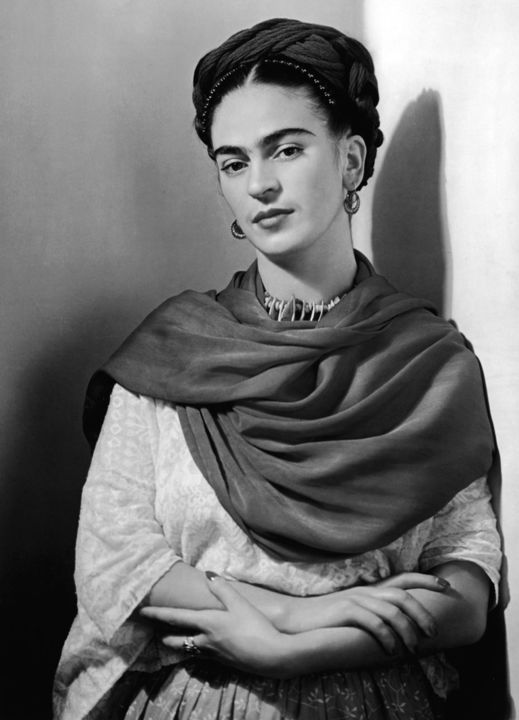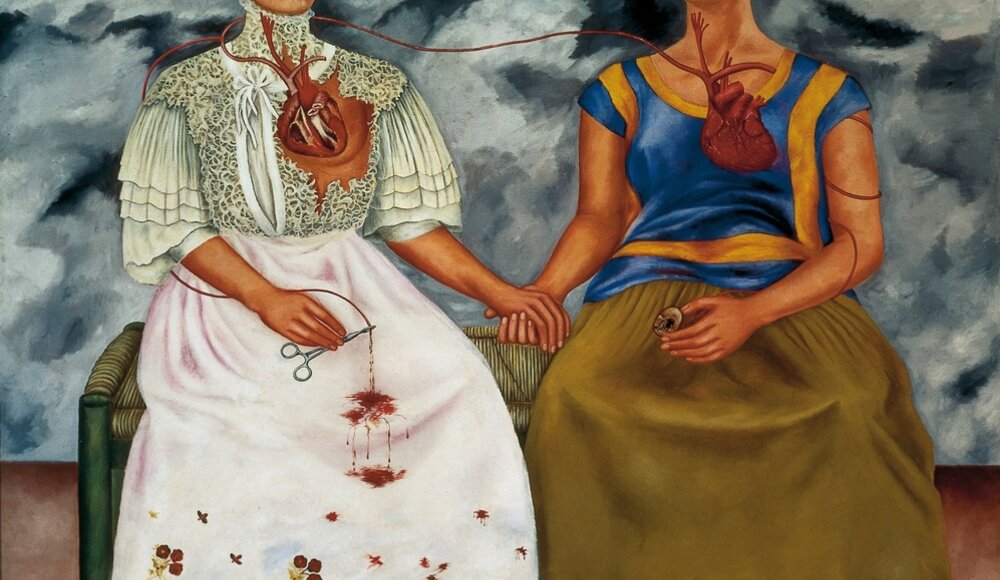
Whether we call them damned, tortured or cursed artists, it's clear that many creators, from the Renaissance to current times, from Caravaggio to Tracey Emin, through Van Gogh and Basquiat, passed into posterity thanks to an undeniable talent, reinforced by a legendary existence, often dark and always curious. Blurring the boundaries between incapacity and genius, ignorance and recognition, these artists have fought various battles against the hegemony of their demons.
Alcohol, drugs, diseases, poverty, toxic relationships, melancholy and frustrations are all weaknesses and difficulties that some illuminated minds have failed to overcome. Sometimes, more than joy, pain can be a vigorous source of inspiration, and art history is full of painters whose works are marked by suffering, sorrow or despair.
3. Jackson Pollock: Alcohol as Creative Fuel
 Jackson Pollock in 1949, Photography by Martha Holmes
Jackson Pollock in 1949, Photography by Martha Holmes
This American artist, Little Prince of Abstract Expressionism, was able to leave his mark by his avant-gardism and his very particular working concepts. He contributed a lot to contemporary and abstract practice, notably thanks to the different techniques he invented, appropriated and popularized. This is the case of the all-over technique, which consists in distributing, more or less uniformly, the pictorial elements over the entire surface of a canvas, so that, after being fixed on a stretcher, it seems to extend beyond the edges. This is also the case of action painting and dripping: practices consisting of painting standing, around and above a canvas that is fixed to the ground, and distributing the substance and colors directly by making the paint pot flow, managing the flow of this paint in order to amplify or reduce the thickness of the strokes thus achieved.
However, all geniuses have their share of shadows. For Pollock, alcoholism was his burden.
Born and raised in the bucolic setting of deep and middle America, he grew up in a large sibling group, in a family settled in the heart of the American West. At a very young age, he developed a passion for Indian culture, surrounded by immense and indomitable wild plains. Pollock's family moved many times, travelling between Arizona and California. Jackson's father quickly became an alcoholic, dragging his five children into the dark depths of his addictions.
At the age of 15, the aspiring artist already shows the first signs of latent alcoholism, which will follow him until his death: he fails, leaves high school before finishing his studies, and is expelled from a school of manual arts. A few years later, his father dies of a heart attack, probably caused by his recurring drunkenness.
 Jackson Pollock, Painting A, 1950. Galleria Nazionale d'Arte Moderna, Rome, Italy.
Jackson Pollock, Painting A, 1950. Galleria Nazionale d'Arte Moderna, Rome, Italy.
In spite of this tragic event, Jackson recovered and slowly managed to limit his alcohol consumption, thus taking advantage of a twenty-year respite, during which he was able to experiment, listen to jazz and paint all day long, from waking up to bedtime.
His wife, Lee Krasner, his friend, Clement Greenberg, and his psychoanalyst not only help him channel his emotions into his work, but also provide him with valuable support in documenting his practice and techniques, as well as stimulating the interest of collectors and institutions.
In spite of this benevolent environment that kept Jackson Pollock away from perdition, his addiction was never far away, as he regularly plunged back into debauchery. One evening in August 1956, when the artist was just 44 years old and enjoying a serious reputation, he died in a car accident. Drunk and driving at an unreasonable speed, he collided with a tree and died instantly.
2. Frida Kahlo: Drama and Casualness

Everyone knows Frida Kahlo. Now considered as an icon of feminism and bohemian life, her face and favorite themes can be found on all kinds of merchandising, from children's Barbie to phone cases and Christmas socks. On few occasions, when one of her artworks appears at auction, the auction rooms go crazy. What is less well known is the tragic life trajectory that lies behind the bold eyebrows of the Mexican artist.
The first difficulties will appear from his earliest childhood. At the age of 6, she was diagnosed with a rare disease, poliomyelitis, a disease that could lead to paralysis of certain muscles, sometimes even death. After more than 9 months spent in hospital, Frida did not come out of it unscathed, as her leg remained atrophied and stopped growing. This episode has physical consequences for the artist, who will no longer be able to move normally, and social consequences: her classmates will call her "Frida la coja", Frida the lame.
After her 18th birthday, fate was once again bitter: she was involved in an atrocious bus accident on her way home from school. The bus collided with a trolley car and several of her classmates died instantly. Although Frida was spared death, she is far from unharmed: her abdomen and pelvic cavity are pierced by an iron bar, she has several fractures in her right leg, her right foot is broken, her pelvis, sides and spine are shattered.
She stayed in bed for several months following these tragic events. It is with the intention of benefiting from this period of convalescence that she decided to experiment painting. Her friends and family offered her a mirror, thanks to which she could see the evolution of her remission. This same mirror explains why Frida Kahlo made so many self-portraits during her short career: just over 1/3 of her artworks are representations of herself (55 out of 143 paintings).
Following this recovery, Frida Kahlo can finally enjoy a period of peace. She became closer to the Mexican Communist Party, engaged in the emancipation of women, and dreamed of freedom, travel and well-deserved frivolous pleasures.
Three years later, in 1928, Frida met Diego Rivera, a man who changed her life forever. This illustrious Mexican fresco artist, very politically involved, and 21 years older than her, was at once her colleague, her accomplice, her lover and her confidant. Very quickly, her admiration for this charismatic character turned into a morbid and destructive fascination. They get married in 1929, only one year after their meeting, and very quickly, the misbehaviours add up: Diego cheats on his wife with his little sister, Cristina Kahlo, while Frida begins various extramarital relationships, including one with the famous communist militant Leon Trotsky. Deeply wounded by the secret romance between her husband and her little sister, Frida exploits this pain as creative fuel, and thus creates one of her masterpieces: A Few Small Nips. She will confess: "There have been two great accidents in my life. One was the trolley, and the other was Diego. Diego was by far the worst.".
 Frida Kahlo, A Few Small Nips, 1935. Museo Dolores Olmedo, Mexico.
Frida Kahlo, A Few Small Nips, 1935. Museo Dolores Olmedo, Mexico.
Despite these delicate events, the passion that drives the two protagonists remains powerful. As the years go by, the couple separates, finds each other again, divorces and remarries. Frida's health problems increased, her fragility and medical background were a weakness. She suffers from various chronic illnesses during her travels, her spinal pain becomes more and more recurrent, and she contracts an acute fungal infection in her hand, making it impossible for her to paint.
From the 40's, she had to wear an iron corset to maintain her painful spine. This strange costume will trigger the realization of the very famous Self-Portrait : The Broken Column. From the 1950s onwards, the difficulties of her life accelerated: she underwent numerous operations, had to remain bed-ridden for many months, and in 1953, she had her right leg amputated due to gangrene. Despite the relief of her pain, the damage to her body was too strong. She then plunges into a long period of depression, where suicidal ambitions multiply.
She died a year later, on July 13, 1954, due to a pulmonary embolism.
 Frida Kahlo, The Broken Column, 1944. Museo Dolores Olmedo, Mexico.
Frida Kahlo, The Broken Column, 1944. Museo Dolores Olmedo, Mexico.
Her last words were far from the morbid fatality one might expect: "I hope the exit is joyful, and I hope never to return.". Eight days before her death, she realized her last artwork, a still life with fleshy watermelons, on which one can see the inscription "Viva la Vida", a further illustration of the delicious sarcasm Frida showed throughout her life, despite the curses she had suffered during her inspiring destiny.
 Frida Kahlo, Viva La Vida, 1954. Museo Frida Kahlo, Mexico.
Frida Kahlo, Viva La Vida, 1954. Museo Frida Kahlo, Mexico.
1. Amedeo Modigliani: The Last Bohemian

Modigliani is one of the most illustrious representatives of the Parisian avant-garde of the early 20th century. The manufacture and inimitable style that we recognize today in his stretched portraits with empty eyes and his sensual nudes in warm tones were not, however, unanimous during his lifetime. This disinterest of institutions and collectors never allowed him to obtain financial independence, thus sequestering his possibilities of remission and progression in the mastery of his disastrous addictions.
Modigliani cultivates the legend of the cursed artist. Born into a poor Jewish family, his mother supported his artistic aspirations from an early age. Throughout his childhood, Amedeo suffers from various chronic illnesses: first he suffers from typhoid fever, then from a powerful tubercular pleurisy. It was during these different periods of convalescence that he affirmed his artistic will. He took advantage of this time to read the classic tales of European literature, from Dante to Nietzsche, including Baudelaire, thus developing strong intellectual capacities.
As a teenager, he travels throughout Italy, and discovers the stimulating atmosphere of major artistic squares, from Florence to Venice. He experiences a marginal lifestyle, browsing cafés and brothels, while frequenting a cosmopolitan and decadent community of artists, tasting in turn the pleasures of various vices: sex, alcohol, hashish, occultism, rebellion... All the ingredients were present to stimulate his inspiration and fuel his insanity. He takes advantage of his available time, when he was sober, to enrich his knowledge by visiting most of the churches and museums around his resorts.
In 1906, on his 20th birthday, he moved to Paris, where he joined new festive and shameless friends, such as Maurice Utrillo and Léopold Survage. Considered as the last true bohemian of his time, he roamed cafés, bookshops, brothels, museums and places of life in the capital. His very delicate financial situation pushed him to move again and again. Alternating accommodations and accumulating unpaid bills, he had to sacrifice some of his material possessions to facilitate his displacements, and often destroyed his canvases when they didn't seem successful enough. Despite being well surrounded by his contemporaries, his difficult situation and his addictions isolate him little by little. His consumption of alcohol and hashish becomes problematic. This voluntary alcoholism manifests itself less as a desire of intellectual stimulation than as a palliative solution to his physical pain, which is aggravated by his declining lifestyle and bad habits.
 Amedeo Modigliani, Lunia Czechowska, 1918. São Paulo Museum of Art, Brazil.
Amedeo Modigliani, Lunia Czechowska, 1918. São Paulo Museum of Art, Brazil.
Charismatic and seductive, he survives more than he lives for several years, alternating between intellectual discussions during the day and severe bouts of drunkenness in the evening. Sometimes he spends the night in a trash container, when he doesn't wake up in a cell after an altercation with the police.
In 1917, he met Jeanne Hébuterne, only 19 years old, with whom he fell madly in love. Aware of his excesses and his toxic lifestyle, she represents his last chance of fulfillment. In spite of his health problems, which were slowly eating away at him, creating frequent schizophrenic episodes, the couple seemed to evolve without difficulty: Jeanne became pregnant in 1918. The artist finally finds a semblance of rest thanks to his beloved.
Unfortunately, his bipolar disorders and addictions furtively regained the upper hand over his desire for accomplishment. Feeling overwhelmed after the birth of his daughter in a conflictual context, he decides to leave wife and child to regain his freedom. With Modigliani, freedom quickly rhymes with debauchery. He returns to unreasonable consumption, and inevitably falls back into his past excesses. His tuberculosis symptoms worsen more and more rapidly, and his suffering becomes disabling. He died in January 1920, at the age of 34, on the verge of success.
Obviously, these cursed artists' legends are far from being exhaustive, and we've voluntarily decided to exclude Vincent Van Gogh from this list. The most famous of all cursed artists will be the subject of an article entirely dedicated to him soon, his legend being too vast to be summarized in a few paragraphs.
We hope that these scathing stories have intrigued you as much as they have inspired us, and we recommend our Collection of Artworks inspired by the Great Masters, to discover or rediscover the treasures of modern and contemporary creation.
Bastien Alleaume
Content Manager - Artmajeur Online Art Gallery



 Bastien Alleaume
Bastien Alleaume